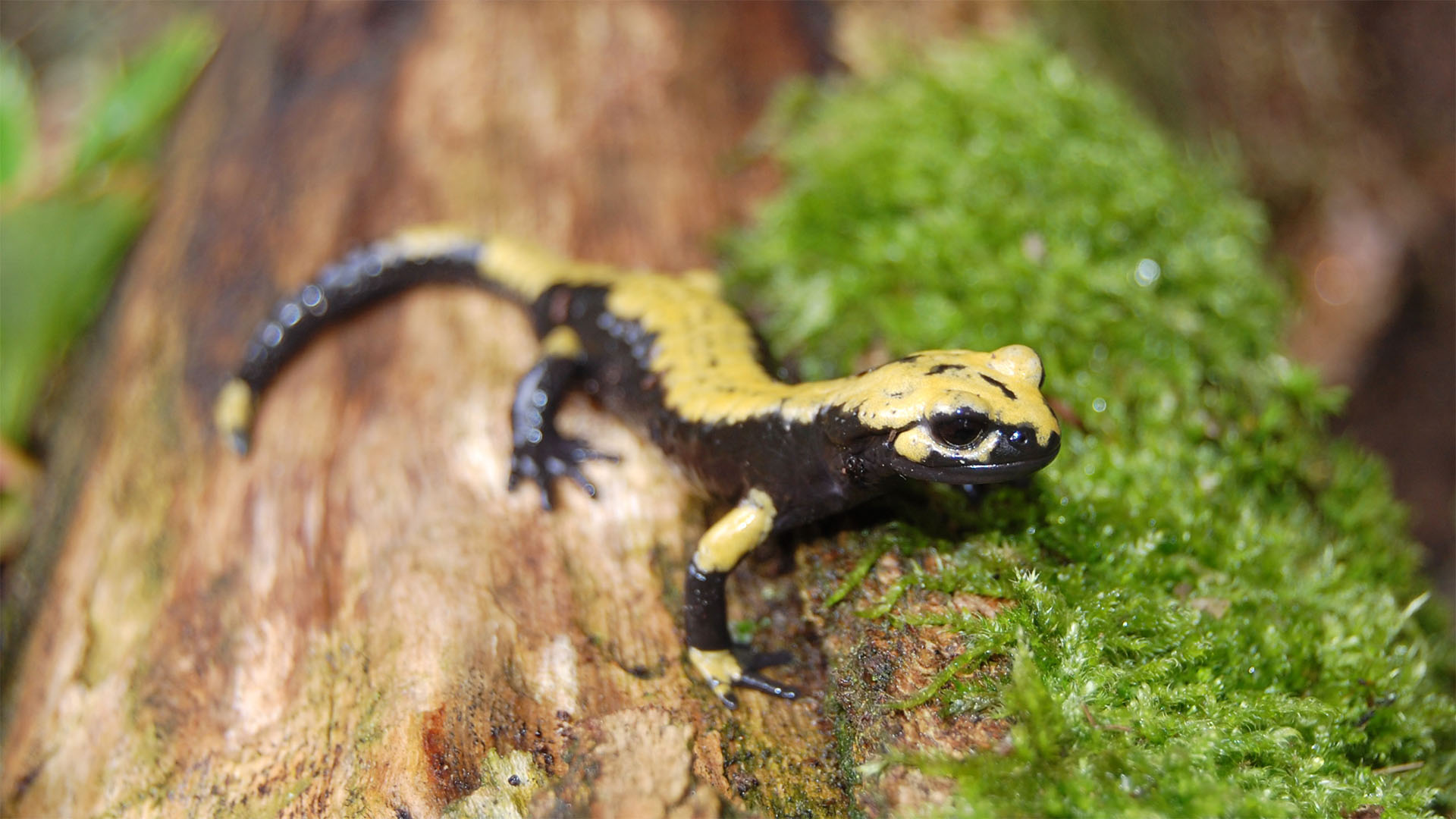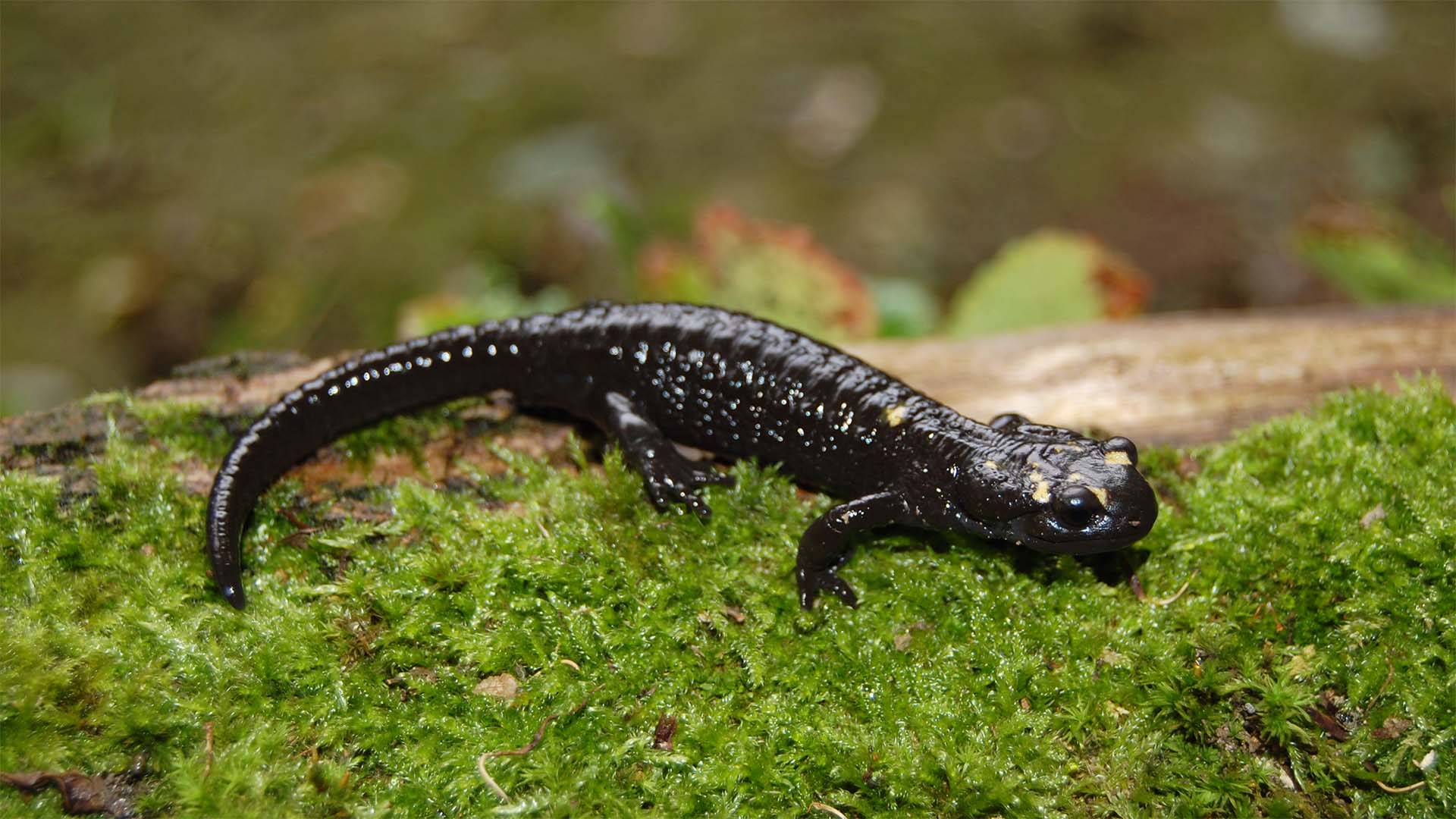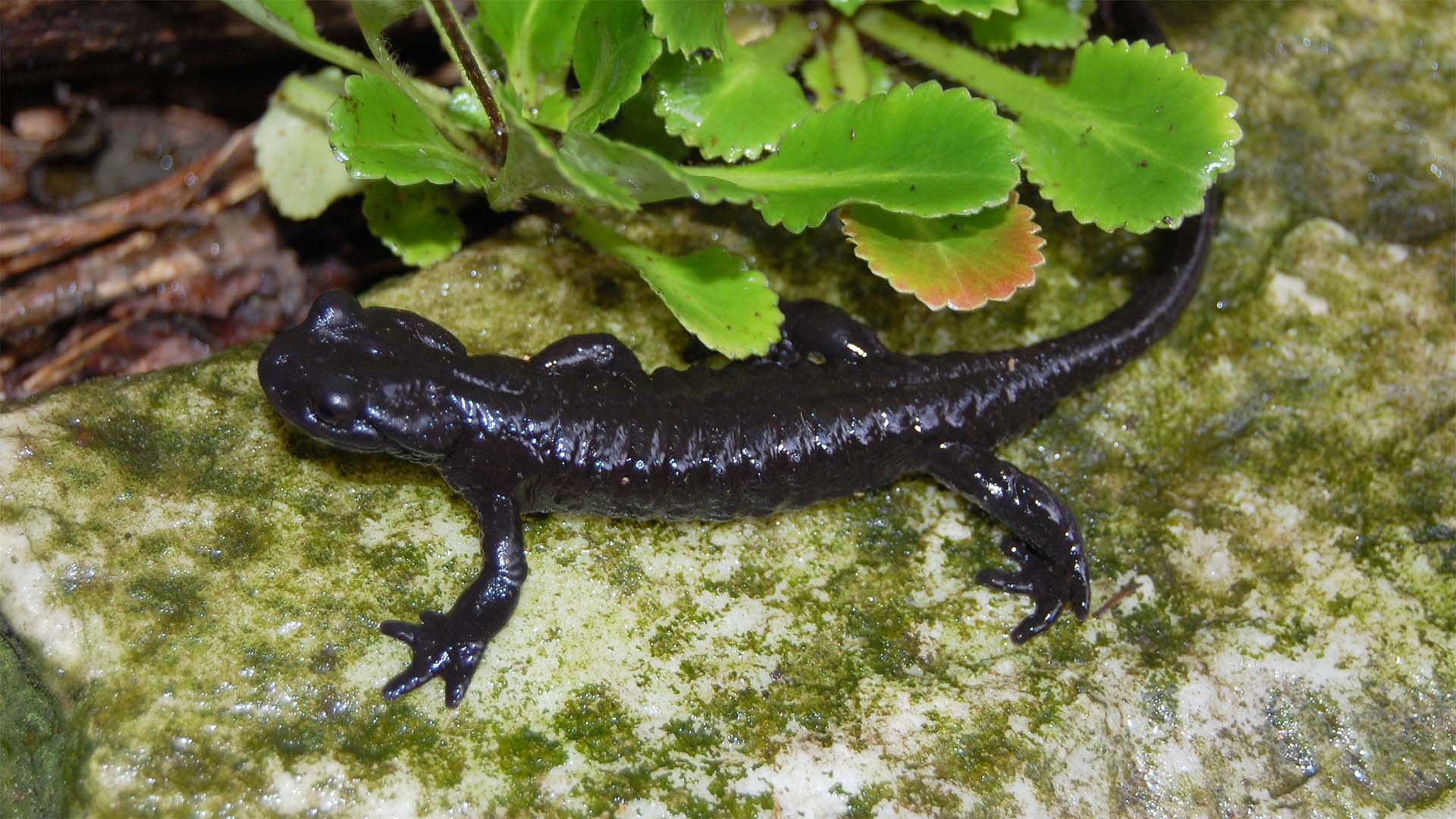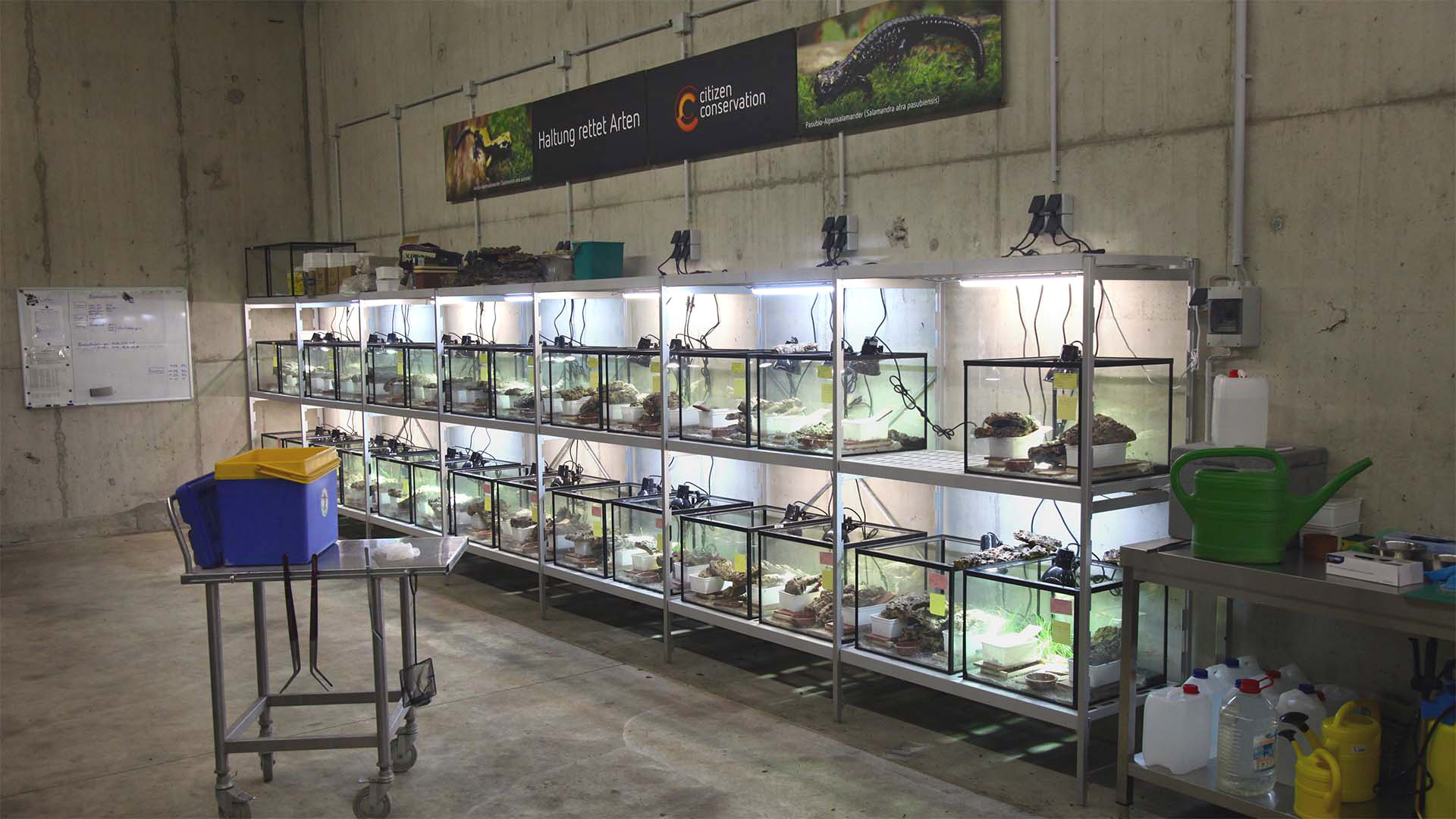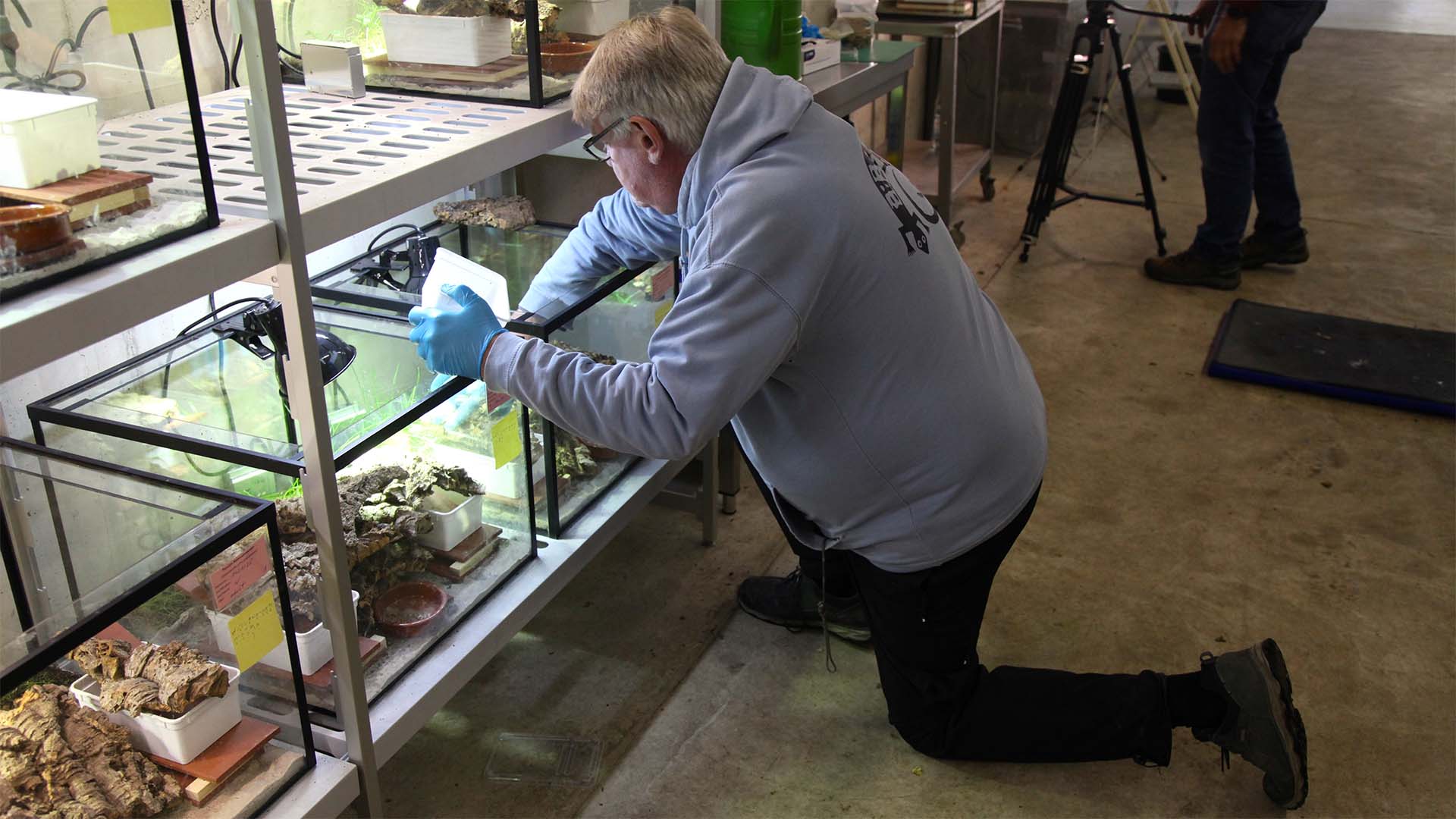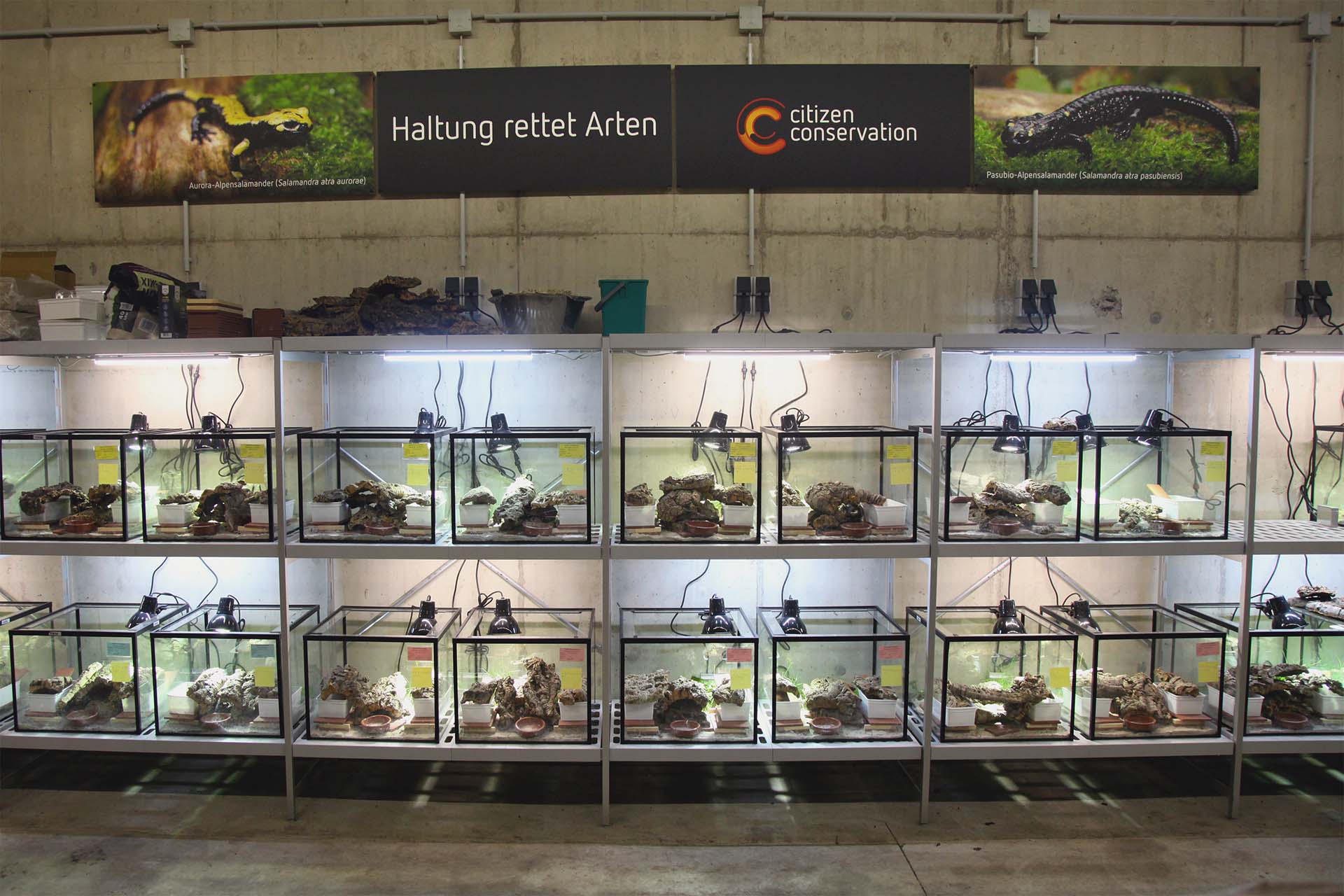
In autumn 2024, several dozen Alpine Salamanders were confiscated by the authorities from the basement of a private individual in Germany. They had previously been illegally collected in the Italian Alps. These were specimens of three extremely rare and endangered species or subspecies of these amphibians: Lanza’s Alpine Salamander (Salamandra lanzai) is the slightly larger sister species of the more widespread Alpine Salamander (Salamandra atra) and, like the latter, is jet black in colour. The Aurora Alpine Salamander (Salamandra atra aurorae), on the other hand, is found only in a few high valleys of the northern Italian Alps, while the Pasubio Alpine Salamander (Salamandra atra pasubiensis) is found in only a few hundred specimens in a single valley in north-western Italy. Both subspecies still show remnants of the yellow warning colouring that was present in the common ancestor of Fire Salamanders and Alpine Salamanders.
The Alpine Salamanders of the competence centre
Expert knowledge for species conservation
After the dark secret in the basement had been revealed, CC advisory board member Uwe Seidel, a private terrarium keeper and one of the leading experts on keeping these amphibians, was asked for advice. He responded immediately and informed Citizen Conservation about the discovery: ‘It was immediately clear to me that these animals are invaluable for species conservation and definitely belong in a conservation project.’
After consultation with the relevant species protection authorities, returning the animal to its original habitat was out of the question. At the same time, the situation of these Alpine Salamander species is already so precarious that it is urgently necessary to establish a breeding programme in human care in order to preserve them.
Feeding up and rebuilding
First of all, however, it was necessary to stabilise the animals, some of which were in very poor health. At the request of the nature conservation authority, Uwe Seidel took on this task. For over half a year, he nursed the animals, which were only 15 cm long as adults, back to health. Meanwhile, CC searched for suitable institutions that were willing and able to provide the necessary facilities and personnel to take on the long-term care and conservation breeding of the animals. Björn Encke, managing director of Citizen Conservation: “The aim was to spread the risk across two locations that were close to Uwe Seidel, because we didn’t want to lose his expertise in salamander care. It was an absolute stroke of luck that Hanover Adventure Zoo and the Sachsenhagen Wildlife and Species Conservation Station immediately decided to get involved.”
Following approval by the Lower Saxony State Agency for Water Management, Coastal Protection and Nature Conservation, which is responsible for the case, preparations could begin.
Alpine specialists in the bunker
Alpine Salamanders, which originate from mountainous regions, need cold temperatures. Accordingly, a basement room was prepared at Hanover Zoo – and an entire bunker in Sachsenhagen. Florian Brandes, head of the wildlife and species conservation station, explains, “There are a number of old NATO ammunition bunkers on our premises. The temperature in these bunkers remains between 5 and 14 degrees Celsius all year round. These are ideal conditions for Alpine Salamanders, which need a cool environment with a sharp drop in temperature at night, as in the Alps, and also spend a large part of the year in hibernation.”
With financial assistance from Citizen Conservation, a breeding facility was set up in just a few weeks, strictly according to Uwe Seidel’s specifications: “We know virtually nothing about what Alpine Salamanders need to not only stay healthy, but also to mate – so we’ll probably have to try a few things to be successful.”
Slow reproduction, rapidly growing dangers
Reproduction in Alpine Salamanders is extremely lengthy. These amphibians are viviparous. They give birth to only two young every two to four years. The reason for this is the cold climate in their habitat. In the high mountains, temperatures only rise to a level suitable for cold-blooded animals for a few months of the year; the rest of the year they spend in hibernation. This period would not be long enough to lay larvae or even eggs, which then develop in the water. Given these weather conditions, it is therefore better to carry only a very small number of young directly in the womb. This highly specialised and time-consuming reproduction makes the Alpine Salamander doubly vulnerable. On the one hand, poachers can cause serious damage to the population by collecting even relatively few individuals; on the other hand, this adaptation to the conditions in the high mountains makes them particularly sensitive to climatic fluctuations, such as those to be expected as a result of climate change. In addition, for several years now, there has been a further threat from the salamander-eating fungus rampant north of the Alps, which is leading to alarming mass deaths in Europe’s Fire Salamander populations. The fungus is also spread via its spores, which can adhere to mud, plants or animals – and also to the shoes of the very smugglers who illegally hunt amphibians.
This particular threat was one of the main reasons why the DGHT designated the Alpine Salamander as the ‘Amphibian of the Year 2026’.
Donations for the Alpine Salamander Competence Centre
If you would like to support the Alpine Salamander Project, please donate via PayPal to office@citizen-conservation.org with the reference ‘Alpine Salamander’ or transfer your donation to the following account:
GLS Gemeinschaftsbank eG
Reference ‘Alpine Salamander’
IBAN: DE38 4306 0967 1271 7068 00
BIC: GENODEM1GLS
Alpine Salamander Competence Centre
“The threat to the Alpine Salamanders is very serious,” emphasises zoological curator Robin Walb from Hanover Adventure Zoo. “We now have the opportunity to study and breed the animals under controlled conditions in order to prevent their extinction.” This is particularly important for the two highly endangered local endemic species, the Aurora and Pasubio Alpine Salamanders, and also for the Lanzas Alpine Salamander, which is only found in a small area too. This would allow us to reintroduce animals into suitable habitats at a later date, if possible. The Alpine Salamander Competence Centre in Lower Saxony is a first step in this direction.
Citizen Conservation co-founded Feuersalamander.NET in 2024, an association of various organisations and institutions from the fields of species and nature conservation, science and animal husbandry. From the outset, Feuersalamander.NET has been committed to protecting the Fire Salamander and supporting the development of ex-situ capacities for its close relative, the Alpine Salamander. The newly established ‘Alpine Salamander Competence Centre’ is an important milestone towards this ambitious goal.
The entire thriller surrounding the poached Alpine Salamanders and the establishment of the competence centre initiated by CC is documented in a film produced by CC, which is now freely available:
